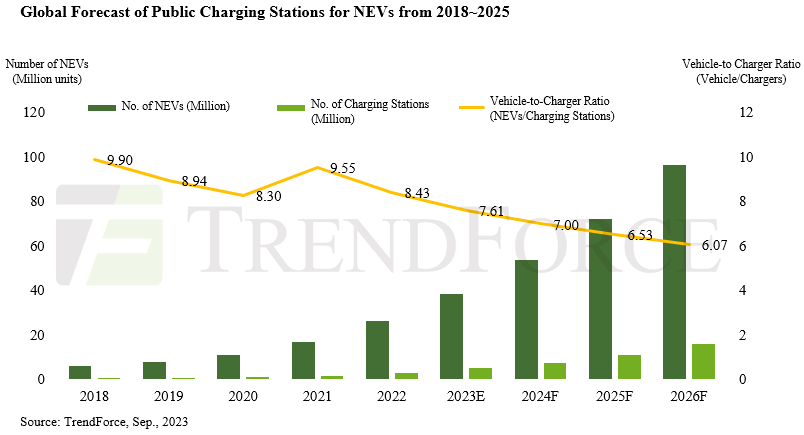
By 2026, the number of EV’s will be 96 billion globally setting the vehicle-to-charger ratio at 6:1, a significant drop from the 10:1 ratio in 2021.
China has set a goal of achieving a vehicle-to-charger ratio of 2:1 by 2030.
Europe is targeting the construction of 17 million charging stations by 2030.
America, with a little over 200,000 charging stations currently, aspires to hit the 500,000 mark by 2026 which will coincide with a projected EV count of 15 million, delivering a vehicle-to-charger ratio to 32:1.
Around the same period, Europe and China are projected to have ratios of approximately 9:1 and 4:1, respectively.
NEV owners globally grapple with a maze of charging standards. Prominent among these are the US standard CCS1 (Combo), the European standard CCS2 (Combo), Japan’s CHAdeMO, China’s GB/T, and Tesla’s NACS standard. Europe and China offer a simpler scenario for their citizens by adhering to a single domestic standard.
In contrast, the US is a battleground, with both CCS1 and NACS standards vying for dominance. While adapters provide a temporary bridge between the two, the rapid rise of NACS kindles apprehension among CCS1 aficionados about their future stake.
A diverse array of charging standards across the globe means charging equipment manufacturers must adopt flexible product strategies to cater to different market specifications.
GM, Mercedes-Benz, BMW, HONDA, Hyundai-Kia, and Stellantis are joining forces to spin off dedicated charging infrastructure companies.






